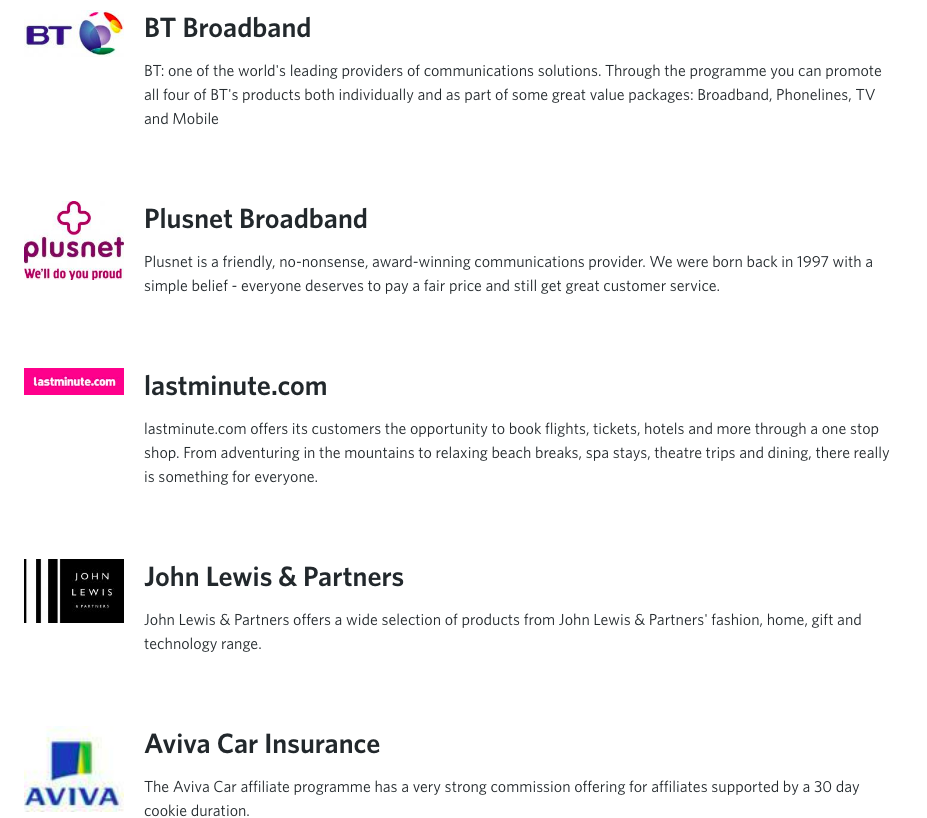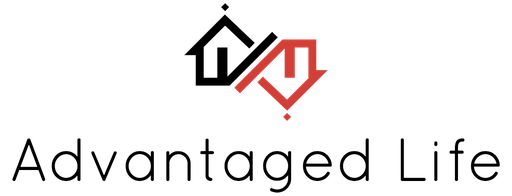So you’ve seen all these posts online about how bloggers make fortunes online, but have you ever wondered exactly how they do it? Well today I’m going to show you the top 4 ways to monetise your website which all of these bloggers have used to explode their earnings.
And who knows, maybe one day, once you’ve learned these methods inside and out, you can join them in reporting tasty profits from your very own website!
So without further ado, let’s get into into it.
The Top 4 Ways To Monetise Your Website
1. Advertising
Undoubtedly one of the easiest methods to monetise your website is to place adverts on it. This is usually as simple as copying and pasting a unique code into your web pages and hey presto, you can start earning immediately.
There are multiple ad networks that you can apply for, the largest and most well-known is of course Google AdSense. They are perhaps the best network for beginners as you don’t need a minimum threshold for page views on your website to get started.
However, they are quite strict with their content guidelines. For example, I can’t use them because it would think my matched betting content would constitute promoting gambling, which is a big no-no for AdSense.
So what are your options if you get rejected from AdSense?
Fortunately, there are plenty of advertising networks that are just as easy to be accepted for without having to adhere to strict content guidelines. I currently use ads provided by Media.Net and they provide both text and display advertising (powered by Yahoo) for this website. I get paid for both impressions (CPM) and clicks on my adverts (CPC).
There are many other options for website newbies too.
Propeller Ads are a widely-recognised network who offer similar ads to Media.Net with equally easy admission. Or you could go for a slightly different approach and apply to Revenue Hits, who provide much higher commissions but they don’t pay for impressions, instead they pay for clicks and actions taken after you’ve referred your visitors to other websites (CPC/CPA).
You will need thousands of page views a month to make any sort of meaningful revenue with these advertisers, so this method is certainly not a “quick win” for monetisation. However, when you are over 100,000 page views a month you will start to see lucrative returns, particularly if you are on one of the premium advertising networks.

Once you achieve over 25,000 page views you can apply to MediaVine who provide premium display advertising. You can witness anything from a 2x to 4x increase in earnings over AdSense by switching, but it will take a while before you are regularly hitting these numbers with your website.
EDIT: MediaVine now set the threshold at 25,000 sessions, not page views. For more details see their comment below.
Once you get to the stratospheric numbers of 100,000 page views a month you can apply to AdThrive who specialise in advertising on larger websites. Some Webmasters report earning enough from MediaVine to not need to make the switch or report similar earnings after making the switch so it’s not as much of a no-brainer as applying to MediaVine when you hit 25,000 sessions. It’s more a case of seeing what works for your website.
Some ads may perform better than others on your site and it’s about tweaking them to maximise revenues, whether you are just beginning or you are a seasoned pro. Once you have a balance you are happy with then stick with it.
Obviously, remember not to completely flood your site with ads, as they will turn visitors off and you will see your visitor numbers slowly fall, leading to reduced advertising income.
2. Affiliate Marketing
Perhaps the most prevalent form of monetising websites is through affiliate marketing. This method is very simple. You apply to promote a particular company or product and they give you a link to insert into your website. If someone buys the service/or product after clicking on your link, you are rewarded with either a percentage of that sale, or a set fee, known as an affiliate commission.
What’s more, if someone doesn’t purchase that product or service straight away it’s not the end of your earning potential. Most affiliate links come with a 30-day tracking cookie. So if someone returns to that site again and purchases or takes a specific action with one month you still get the commission.
Affiliate marketing is split into two main categories and two main structures. I’ll start by explaining the different categories.
The two main categories are CPA (Cost Per Action) and revenue sharing.
CPA usually pays out when someone completes a specific action on a website. For example, you may receive a $1 commission every time someone clicks your affiliate link and fills out their email address on a form provided by the website that you are advertising for. This is known as a Cost Per Action; the action here being filling out their email address.
CPA affiliate offers usually serve up much lower commissions, but the qualifying actions are usually small and therefore it is likely that you will get paid more often.
Revenue share or percentage share is the more traditional format of affiliate marketing. This is where you receive a percentage of the sale of whatever you refer your visitor to. The absolute best commissions are for repeat subscription services. This is because you don’t just get paid a commission once, you receive one for every month a visitor pays for that particular service. In a lot of cases you can still be earning commissions years after the visitor you referred made the original purchase.
Now let’s move on to the two main ways affiliate marketing is structured.
The first is applying for individual programs. A lot of companies devote a lot of resources to affiliate marketing (it is very effective in some niches) and so you will apply directly with them to promote their products or services.
Some companies have very strict requirements for their affiliate programs and others are much more relaxed, it all depends on what industry you are operating in. The biggest example of a direct partnership would be Amazon Associates. You sign up and just start linking to products on their website, if a customer buys anything within 24 hours you receive a percentage commission.
This is a great program to get your toes wet with affiliate marketing as Amazon has huge brand recognition so you are likely to get some sales, as long as you have a decent number of visitors to your website. However, unfortunately for us, they re-visited their affiliate program and have started slashing how much of a percentage you receive on certain types of products, so it’s not anywhere near as good as it used to be.
The second structure is made of huge affiliate networks. Instead of applying directly with a company, you apply to be part of network that houses hundreds of companies and brands. Once you get approved you will have access to all of those companies, without having to apply individually, which is a huge time-saver.
The biggest networks are Max Bounty (CPA Network), Awin, Commission Junction, ClickBank and Offer Vault (CPA Network). But these are just a few of the hundreds available, I may list all of the best networks in a different post at a later date, we’ll see.

I would advise it’s best to have a mix of both types of commission and both program structures. Diversification helps protect yourself if a company, offer, or affiliate network suddenly disappears or goes bankrupt.
3. Sponsored Posts
Sponsored posts are a great way for more established bloggers and websites to make money. This method is also incredibly simple. A brand or company pay you in order to mention them or write about their products or services, and usually they ask you to link back to their website.
The higher the authority of your domain and the higher your traffic numbers are, the more you can charge to post such content.
If you want to you can check your Domain Authority here.
As a general rule you probably won’t be able to start charging any serious money for sponsored content until you have a DA of over 30.
The best bit? Sometimes you don’t even have to write anything, they provide an article written by their in-house marketers, all you have to do is post it and receive money.
Obviously, the largest concern with this method of monetising is ethics.
You don’t want to end up writing a positive review of a product or service just because they have paid you to do so. Or worse, create a post promoting a product that is of inferior quality and then have your website visitors coming back to question why you had such a good experience using it when everybody else has had a bad one in the comments section of the post.
Often the best way is to find a product or service you know and love already and pitch to them directly explaining why your website would be a good fit.
Similar to affiliate marketing, there are two main structures within sponsored posts. Approaching, or being approached by companies directly or joining a network such as Bloggers Connected.
There’s no right and wrong way of getting into sponsored posts so it’s up to you whether you want to join a network, or feel confident enough to approach a brand directly. It’s purely personal preference.
4. Sell Your Own Products
Perhaps the most labour intensive, but definitely the most lucrative is creating and selling your own range of digital or physical products on your website. The most common method is to become an expert on a topic and then create and sell an online course or ebook on it.
Obviously this takes a lot of work upfront, but once created, you can just sit back and watch the money roll in.
And guess what the best thing about creating your own products is?
You can create your own affiliate program so that other people can sell them for you!
This is not something you will be able to develop and sell straight off the bat, you will need to build and create a loyal audience and prove though posts on your website, or videos on your YouTube channel that you you know what you are talking about.
Once you gain that level of trust you will be ready to launch your “information product” and reap the rewards for years to come.

You can just as easily do the same for for physical products.
After building up trust and authority in your industry, you can got to sites such as AliBaba to find suppliers to produce your own range of whatever your product specialism is. You can then integrate those products in to your website using Amazon FBA or another drop-shipping solution on the back-end.
You will then have the capability to proceed to sell products to your clients directly through your website, and on Amazon, should you chose to go down that route.
Wrap-Up
Hopefully you’ve gained a lot from reading this article.
As you can see there are numerous ways to monetise your website. Some can be done within an hour and others will take weeks and months to coordinate and create.
Either way, it’s best to run a mix of these mediums together so you are not overly-reliant on one or the other.
